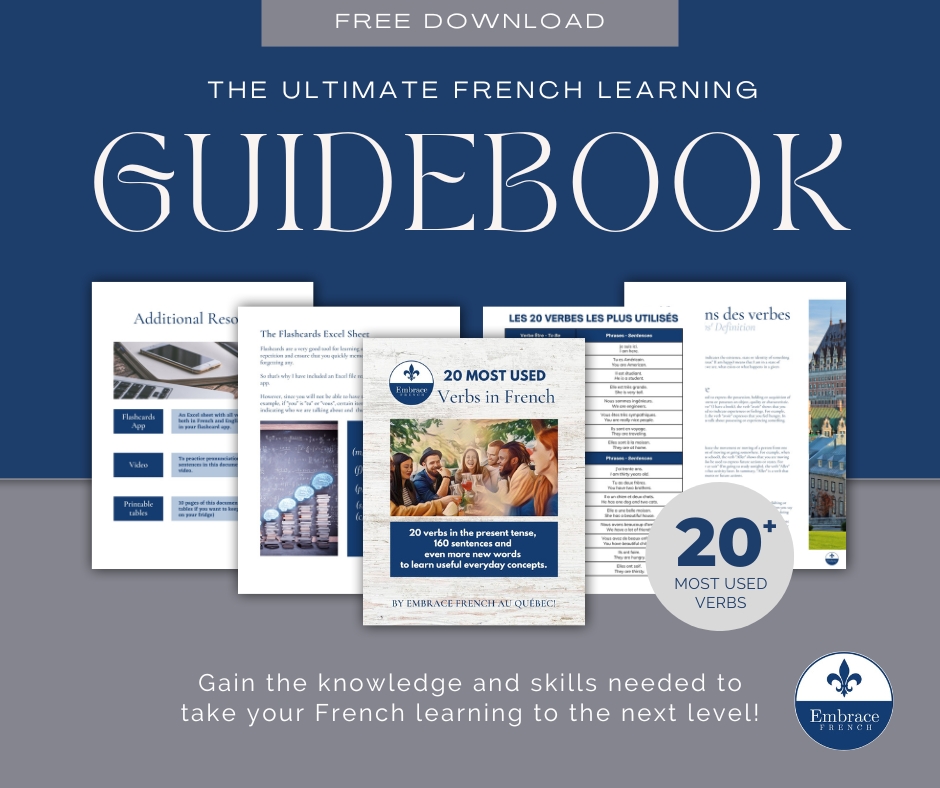The difference between À and A
CHALLENGE #16

When our mother tongue is one without accents, umlauts and cedillaes, it’s not always easy to grasp the importance a simple line above a letter can have.
If one of the reasons you are learning French is because you need it in writing, this challenge will come in very handy, as it’s in this form that the difference between these two words really comes into its own.
The quick and easy explanation
If I had to explain the difference in less than a minute, I would simply say that « a » is the verb “avoir” with il/elle/on in the present tense and that « à » is a preposition.
Indeed, “a” = “has” et “à” = “to”.
Il a deux frères. – He has two brothers.
Je vais à Montréal. – I am going to Montreal.
A: the complete explanation
As mentioned in the previous section, « a » is the verb “avoir”, in the present tense, 3rd person singular:
- Elle a une belle et grande maison. (She has a big, beautiful house.)
- Aujourd’hui, il a une répétition de théâtre. (Today he has a theater rehearsal.)
- On a une réunion avec la haute direction. (We have a meeting with senior management.)
The « a » is also used with the passé composé, always in the 3rd person singular, when using the auxiliary “avoir”:
- Hier, elle a eu toute une surprise! (Yesterday, she had quite a surprise!)
- Il a parlé au directeur et tout s’est arrangé. (He spoke to the manager and everything worked out.)
- On a réservé au restaurant. (We made reservations at the restaurant.)
How to avoid confusing « a » with « à »
As you now know, « a » is a verb. So if it’s a verb, it’s automatically « a ».
If in doubt, replace it with another word. Most websites on learning French suggest putting « a » in the imparfait indicatif, in other words, replacing « a » with « avait ». But if you are a beginner, perhaps changing the verb tense is a little too complex for the moment. So I suggest you change the person: instead of speaking in il/elle/on, try « nous avons ». Let’s try both methods:
- Il ___ deux chiens. Can I say “Nous avons deux chiens”? Yes! So it’s “a”. Il a deux chiens (He has two dogs).
- Elle va ___ l’école. Can I say “Elle va avait l’école”? No! So it’s “à”. Elle va à l’école (She goes to school).
Both methods have their advantages and disadvantages.
The « nous » method lets you stay in the present indicative, but you need to be comfortable changing pronouns.
The imparfait method lets you stay in the 3rd person singular, but you need to know more than just the present tense.
À: the complete explanation
The « à », with an “accent grave”, is a preposition. When spoken, « a » and « à » are pronounced exactly the same, but when written, the accent is used to emphasize that it’s not a verb. For example, if I write “Il a à nouveau échoué son examen” (He failed his exam again), we know it’s the verb “avoir” followed by a preposition. Without an accent, we might wonder whether I have made a typing error by writing « a » twice.
In French, a preposition is an invariable word that introduces a complement:
- a place: Je vais à l’école (I am going to school.)
- an addressee: Cette lettre est adressée à Marie. (This letter is addressed to Marie.)
- of time: J’ai rendez-vous à 14 heures. (I have an appointment at 2 pm.)
- of possession: Ce livre est à Pierre. (This is Pierre’s book.)
- of manner: Il a réussi à l’examen. (He passed the exam.)
This article wouldn’t be complete if I didn’t take the time to explain that « au » and « aux » are also made up of « à ». While we can write “de la crème glacée à la vanille”, we can’t write “de la crème glacée à le chocolat”.
À + le = au
Therefore, « au » is a contraction of « à » and « le ». It is used before masculine singular nouns.
We don’t say « Je vais à le cinéma », but « Je vais au cinéma » (I am going to the cinema).
À + les = aux
Here, the same rule applies as in the previous section, but for the plural. Thus, « aux » is a contraction of « à » and « les ». It is used before plural nouns, whether masculine or feminine. We don’t say: « Je parle à les étudiants », but « Je parle aux étudiants » (I am talking to the students).
Your challenge: place à, a, au or aux in the following sentences
Do the following two exercises to master everything we have just discussed in this article.
As usual, the answers can be found on our Facebook page.
Choose whether to use « a » or « à » in each sentence.
- Marie va ___ l’école tous les jours.
- Elle ___ un chien qui s’appelle Max.
- La ville ___ un charme particulier en automne.
- J’achète un cadeau ___ mon ami pour son anniversaire.
- Nous partons en vacances ___ la montagne cet été.
- Nous avons rendez-vous ___ 15 heures.
- Le professeur ___ une passion pour l’histoire ancienne.
- Elle participe ___ un concours de danse demain.
- Ils habitent ___ Paris depuis cinq ans.
- Mon frère ___ un talent inné pour la musique.
Choose whether to use « à », « au » or « aux » in each sentence.
- Il répond __ la question posée par le professeur.
- Les équipes participent ___ compétitions sportives.
- Mon père est allergique ___ la poussière.
- Il va ___ travail en métro tous les jours.
- Mes parents voyagent ___ États-Unis cet été.
- Il a répondu ___ téléphone immédiatement.
- Le livre appartient ___ ma soeur
- Ils parlent __ invités pendant la fête.
- Nous allons ___ cinéma ce soir.
- Les touristes s’intéressent ____ monuments historiques.
Have you downloaded your free guidebook package?

You can now download a free learning package on the 20 most commonly used verbs in French, conjugated in the present tense. This set includes an ebook with all the verbs and a sentence for each person (je, tu, il, elle, nous, vous, ils, elles), an Excel file to add all the concepts from the ebook to your flashcards application and a video where you can hear me pronounce these verbs and sentences. And it’s free! Download it now!


